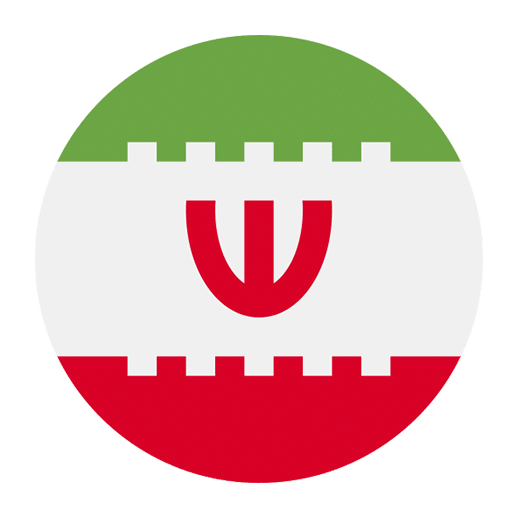In our increasingly interconnected world, learning a new language can open doors to new cultures, experiences, and opportunities. Persian, also known as Farsi, is a beautiful and historically rich language spoken by millions in Iran, Afghanistan, Tajikistan, and by Persian-speaking communities worldwide. For English speakers learning Persian, traditional textbooks and classroom instruction provide a solid foundation, but incorporating media—such as TV, radio, and online resources—can significantly enhance the learning experience. This article explores how Persian media can be leveraged as powerful tools for language acquisition, offering practical tips and resources for learners at all levels.
Why Use Media for Language Learning?
Using media in language learning offers several benefits:
1. **Authenticity**: Media provides exposure to the language as it is naturally used by native speakers, including slang, idiomatic expressions, and cultural references.
2. **Contextual Learning**: Engaging with media helps learners understand the context in which words and phrases are used, aiding in better retention and comprehension.
3. **Listening Skills**: Media, particularly TV and radio, can improve listening skills and pronunciation, helping learners attune to the natural rhythms and sounds of Persian.
4. **Cultural Insights**: Media offers a window into the cultural and societal norms of Persian-speaking countries, enriching the learning experience beyond mere vocabulary and grammar.
Persian TV Shows and Movies
Television shows and movies are excellent tools for language learning as they combine visual and auditory stimuli. Here are some ways to use them effectively:
1. Choosing the Right Content
Selecting content that aligns with your language proficiency level is crucial. For beginners, animated series or children’s shows can be a good start due to their simpler language and clear articulation. For intermediate and advanced learners, dramas, comedies, and news programs provide more complex language structures and vocabulary.
Recommended Shows and Movies:
– **”Shahrzad”**: A popular historical drama series with rich dialogues and cultural context.
– **”The Salesman” (Forushande)**: An Oscar-winning film by Asghar Farhadi, offering deep insights into Iranian society and nuanced language.
– **”Pejman”**: A comedy series that is easier to follow and filled with everyday conversational Persian.
2. Active Watching
Active watching involves engaging with the content rather than passively consuming it. This can include:
– **Subtitles**: Start with subtitles in your native language and gradually switch to Persian subtitles as your proficiency improves.
– **Note-taking**: Jot down unfamiliar words or phrases and look them up later. Try to use these new terms in your own sentences.
– **Repetition**: Re-watch scenes or episodes to reinforce learning. Mimic the pronunciation and intonation of the actors.
Persian Radio and Podcasts
Radio and podcasts are ideal for improving listening skills, pronunciation, and vocabulary. They are also portable, making it easy to learn on the go. Here’s how to make the most of these audio resources:
1. Persian Radio Stations
Tuning into Persian radio stations can provide constant exposure to the language. Whether it’s news, talk shows, or music, radio offers a diverse range of content. Some popular stations include:
– **Radio Javan**: Known for its music, Radio Javan also features talk shows and interviews.
– **BBC Persian**: Offers news and current affairs programs, which are great for advanced learners interested in political and social topics.
2. Podcasts
Podcasts are a versatile medium with various genres to suit different interests and proficiency levels. Some recommended podcasts include:
– **”Learn Persian with Chai and Conversation”**: Tailored for learners, this podcast covers grammar, vocabulary, and cultural notes.
– **”Radio Dastan”**: Features short stories in Persian, helping improve listening comprehension and vocabulary.
– **”Persian Poetry Podcast”**: For advanced learners, this podcast delves into classical and contemporary Persian poetry, offering rich linguistic and cultural insights.
3. Active Listening Strategies
To maximize the benefits of listening to Persian radio and podcasts:
– **Transcription**: Try to write down what you hear. This practice can significantly improve your listening and writing skills.
– **Summarization**: After listening to a segment, summarize what you’ve heard in Persian. This helps reinforce comprehension and retention.
– **Shadowing**: Repeat what you hear as closely as possible. This technique can improve pronunciation, rhythm, and intonation.
Online Resources and Social Media
The internet is a treasure trove of resources for language learners. From educational websites to social media platforms, online resources can complement traditional learning methods.
1. YouTube Channels
YouTube offers countless channels dedicated to teaching Persian. Some notable ones include:
– **”Easy Persian”**: Features street interviews with Persian subtitles, providing real-life conversational practice.
– **”Learn Persian with PersianPod101″**: Offers lessons on grammar, vocabulary, and culture, suitable for all levels.
– **”Persian with Pejman”**: Focuses on practical language skills and cultural insights.
2. Language Learning Websites
Several websites provide structured Persian language courses, interactive exercises, and forums for learners:
– **Rosetta Stone**: Known for its immersive approach, Rosetta Stone offers a comprehensive Persian course.
– **Duolingo**: Provides a gamified learning experience with bite-sized lessons.
– **Memrise**: Uses spaced repetition and mnemonic techniques to help learners memorize vocabulary effectively.
3. Social Media and Online Communities
Social media platforms can be powerful tools for language learning:
– **Instagram**: Follow accounts like @persianlanguage or @learnpersian for daily vocabulary and cultural posts.
– **Facebook Groups**: Join groups such as “Learn Persian Language” to connect with fellow learners and native speakers.
– **Reddit**: The subreddit r/LearnPersian is a great place to ask questions, share resources, and get support from the community.
Practical Tips for Using Media in Language Learning
To make the most of Persian media in your language learning journey, consider these practical tips:
1. Set Clear Goals
Define what you want to achieve with each media session. Whether it’s learning new vocabulary, improving listening skills, or understanding cultural nuances, having clear goals will keep you focused and motivated.
2. Consistency is Key
Regular exposure to the language is crucial. Incorporate media into your daily routine, even if it’s just for a few minutes. Consistency will lead to gradual but steady improvement.
3. Combine Different Media
Don’t rely on a single type of media. Combining TV shows, radio, podcasts, and online resources will provide a well-rounded learning experience and keep you engaged.
4. Engage with Native Speakers
Use media as a conversation starter with native speakers. Whether it’s discussing a recent episode of a TV show or sharing thoughts on a podcast, engaging with native speakers will enhance your learning and provide real-life practice.
5. Be Patient and Persistent
Language learning is a gradual process, and it’s essential to be patient with yourself. Celebrate small victories, and don’t get discouraged by setbacks. Persistence will pay off in the long run.
Conclusion
Incorporating Persian media into your language learning routine can significantly enhance your proficiency and cultural understanding. Television shows, movies, radio, podcasts, and online resources offer diverse and engaging ways to immerse yourself in the language. By actively engaging with these media and following the practical tips provided, you can make your language learning journey more enjoyable and effective. So, tune in, watch, listen, and immerse yourself in the rich and fascinating world of Persian media. Happy learning!

